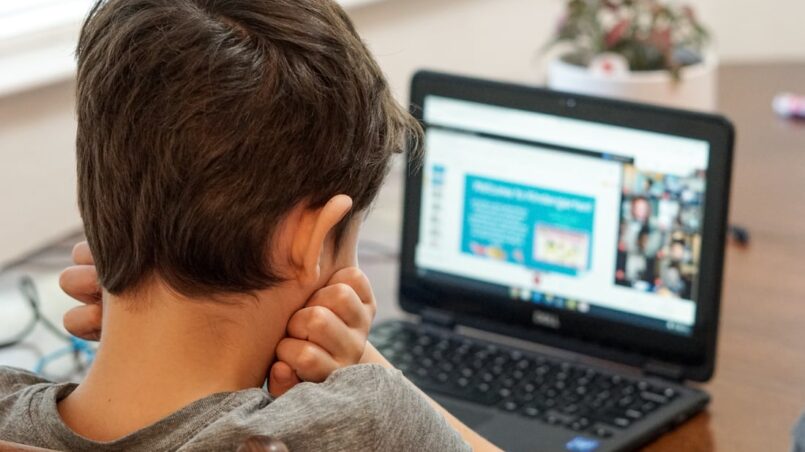
The COVID-19 pandemic’s long-term social and economic implications are uncertain, but many people are concerned that lockdown-related school closures that last months will have long-term consequences. The poor students, girls, and other marginalized groups are disproportionately affected by school closures, according to evidence.
India, with its huge population and weak pre-pandemic education system, is likely to bear the brunt of these effects. In March, the government ordered that all schools be closed. It required states to start reopening some schools in October, but many remained closed. About 320 million children have been forced to miss school as a result of the lockdown.
However, if your students are dropping out of your course or complaining about a lack of encouragement, it might be time to step in and help them. If you’re looking for better ways to help your online learners, here are a few choices to consider.
Offer online office hours
In every standard educational setting, teachers are available to speak with students at specific times during the day or week. There’s no reason why this couldn’t happen online, too. You can easily post availability slots and allow learners to arrange a video call meeting with you using tools like Google Calendar, Hangouts, and Skype.
Even if there aren’t many takers, the prospect of a lifeline may be comforting to many of your students. And if there is a lot of demand for these time slots, you can always change how many of them are available.
Be generous with your feedback
As every teacher who has spent late nights grading papers knows, providing thoughtful, comprehensive input takes time. Most teachers can only manage to read through each assignment and leave a brief statement at the end.
Learners in an online classroom, on the other hand, often need more input rather than less. This gives them confidence that the teacher is paying attention to their work and is invested in their performance.
Promise a fast response time on emails
A timely response time to emails is perhaps more critical than input on assignments. If a student submits a question, they need to know that they will receive a response in a timely manner, particularly if the question is urgent.
First and foremost, make sure that your students have a way to reach you with questions. It’s a good idea to set up a separate email address for this so that the messages don’t get mixed up in your inbox.
Then, provide an estimation of how long it will take you to respond so that your students know when they can expect to hear from you. It’s better if you can answer within 24 hours, but you can also include a notice if you can’t respond on weekends.
Be lenient when possible…
A large number of adult students are taking your course on the side. They might try to fit it in on weekends or after work in the evenings. They can be interrupted by children or other family members when studying. And if they don’t have that, they’re probably more distracted at home than they are in your classroom.
While taking a course from home is more convenient, it does not make it any easier. Allowing your students to know that you are aware of the additional challenges they face and are willing to make accommodations to some degree will help relieve stress and increase motivation to complete the task.
…BUT also provide accountability
Though they should seem to be mutually exclusive at times, leniency and responsibility are not mutually exclusive concepts. Reminders and follow-ups can help students stay on track while dealing with online students, especially those who set their own goals.
If you give a student an assignment extension, notify them of the new deadline as it approaches. If you’re going to give partial credit for late work, make sure the student understands how it will affect their score.
Be proactive in reaching out to learners
Have you noticed a student struggling to complete your course? Don’t wait for them to get in touch with you. Send an encouraging email first, letting them know you’re available if they have any questions.
It’s not necessary to inform them you’ve noticed their commitment is dwindling. If you begin with a reference to a learner’s grades, they can feel singled out or embarrassed. Simply write a few emails to send to students if they miss a lesson, fail a test, or fail to turn in an assignment on time. Use the emails to point them in the direction of additional support or to provide personal tutoring.
Communicate
When you teach an online course, your students seldom get the chance to see you face to face. Your instructional videos may help you become more personable, but they’re still structured content that’s been around for a while. You put the course on autopilot and haven’t checked in yet, as all of your students know.
Of course, one of the reasons you built your course was to save time and reach a wider audience. That doesn’t mean you can’t interact with your students in a way that shows you’re still alive and paying attention.
Student support is a balancing act
With more online learners, instructors are looking for ways to cut down on tasks. It is possible to automate some aspects of student support, such as email reminders. Not every solution will work for every course. Experiment with different approaches to see what works for your course to meet your needs. The amount of learner support you offer will depend on what you are able to take on. It can be difficult to strike a balance between your time management and providing your learners with the support they need to succeed.



